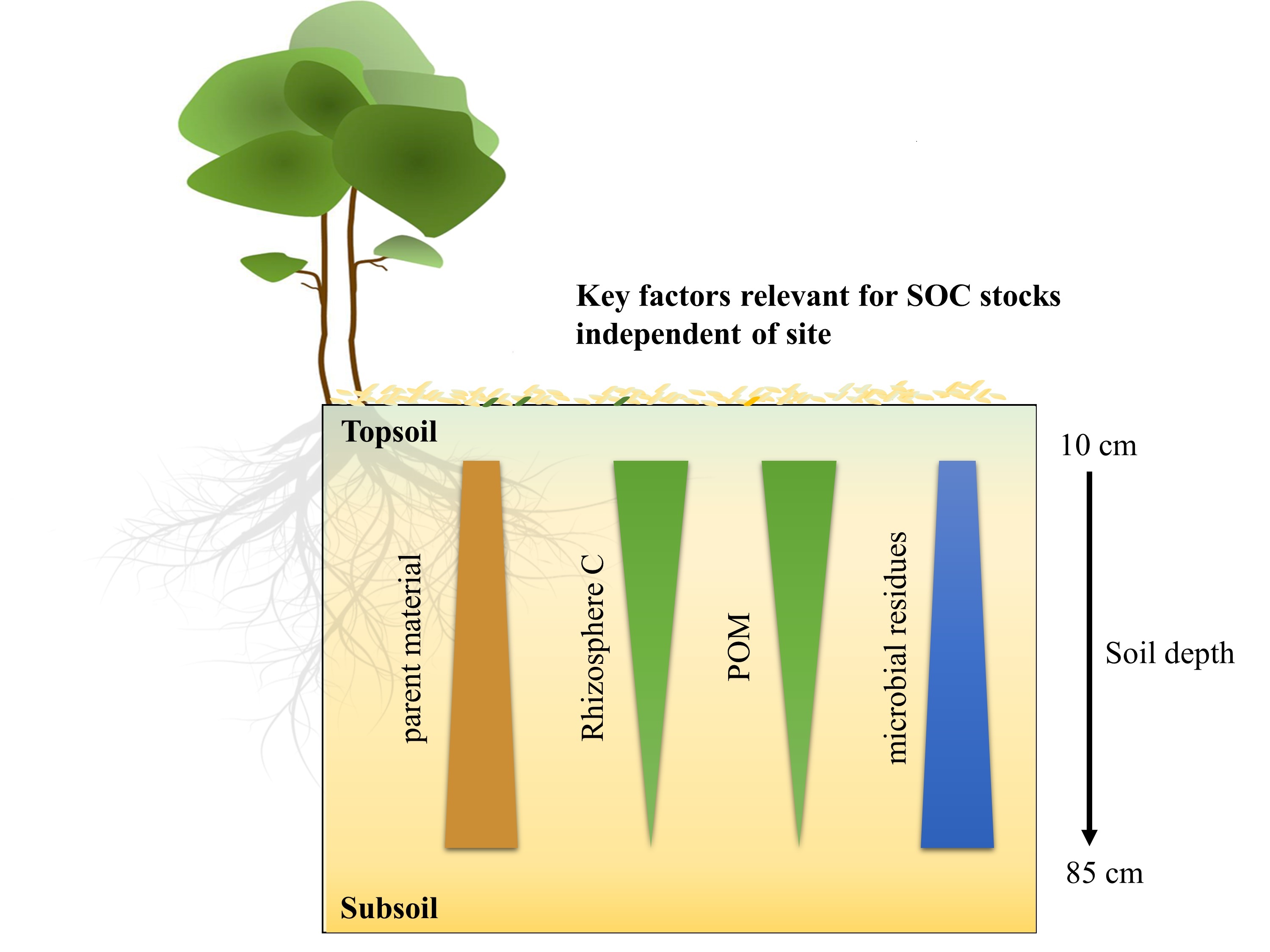 What controls Carbon (C) storage in soils? Only if we know the most relevant factors, we can sustainably manage soils to persistently store old and new C withdrawn from the atmosphere and reduce atmospheric CO2 concentrations. Gerrit Angst from the Institute of Soil Biology and SoWa Research Infrastructure and his German colleagues from Technical University of Munich, Georg-August-Universität Göttingen and University of Cologne tackled this complex question in a recent publication. Covering a geologic gradient, the authors could not only evaluate biotic effects but also parent material influences (i.e., the geologic material from which soils develop).
What controls Carbon (C) storage in soils? Only if we know the most relevant factors, we can sustainably manage soils to persistently store old and new C withdrawn from the atmosphere and reduce atmospheric CO2 concentrations. Gerrit Angst from the Institute of Soil Biology and SoWa Research Infrastructure and his German colleagues from Technical University of Munich, Georg-August-Universität Göttingen and University of Cologne tackled this complex question in a recent publication. Covering a geologic gradient, the authors could not only evaluate biotic effects but also parent material influences (i.e., the geologic material from which soils develop).
A small set of key parameters was central to C storage across different soil depths and parent materials: root-derived material, microbial residues, and clay abundance. Strikingly, the relative contribution of these factors to C storage varied with parent material. Considering these factors not only in the context of the actual soils but also in light of the geological material they developed from may thus help to explain C storage patterns in soils and constitute a step forward in predicting C storage under a changing climate.
